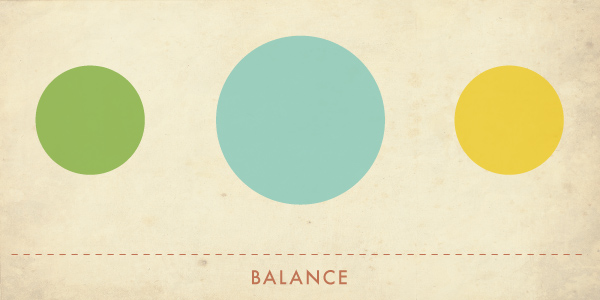balance
It refers to the comfortable arrangement of things in art. Balance can be symmetrical or asymmetrical.
Symmetrical balance (or formal balance) is described as having equal weight on all sides of a centrally placed fulcrum.
On the other hand, asymmetrical balance (also known as informal balance) involves placing objects of varying visual weights in a way that all objects balance one another around a fulcrum point.
contrast
Contrast is the juxtaposition of opposing elements — e.g. opposite colours on the colour wheel, or light vs dark, horizontal vs vertical, thick vs thin. Contrast allows us to emphasise or highlight key elements in design, and can also be used to create an area of emphasis.
emphasis
It refers to the creation of the focal area or centre of interest in a work of art. This area is more important when compared to the rest of the elements in a composition. Emphasis can be created with contrast of values, colours and placement.
movement / directional force
It refers to the visual flow through the composition. It guides the viewers’ eyes and suggests the idea of motion in a design. It can also help to bind the work into a single entity.
REPETITON / RHYTHM
Repetition is the recurrence of a design element coupled with a certain order to the repetition. It provides continuity and flow to a piece of work by tying together individual elements. Repetition can be created with shapes, lines or forms.
unity
Unity is the relationship among elements in an artwork that helps all elements work together to create a meaning. An artwork with unity has nuances of consistency and oneness, and is appealing to the eye. This can be achieved with a common background, similar shapes and patterns, or the arrangement of elements.
References:
http://char.txa.cornell.edu/language/principl/principl.htm
http://www.j6design.com.au/6-principles-of-design/
http://www.fuelyourcreativity.com/the-lost-principles-of-design/
Graphics by www.fuelyourcreativity.com






